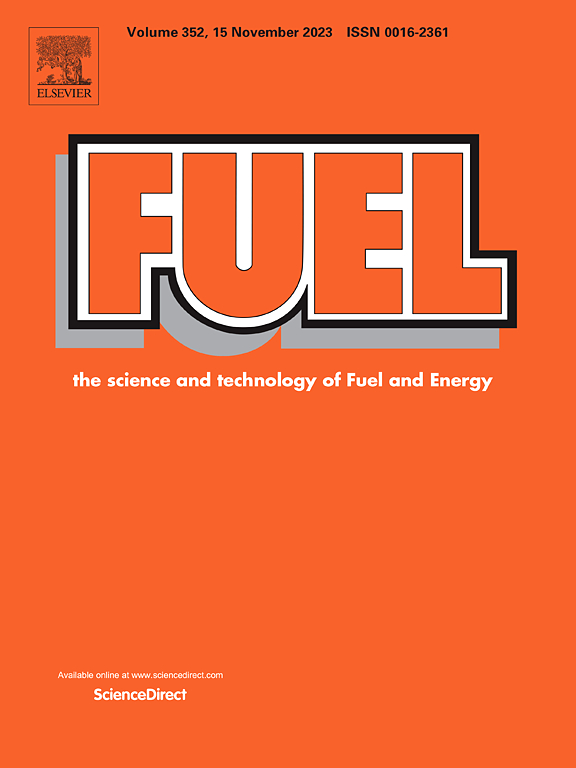New insights into the formation of bulk NiMo hydrotreating catalysts: Influence of the Ni/Mo molar ratio
IF 6.7
1区 工程技术
Q2 ENERGY & FUELS
引用次数: 0
Abstract
A series of granular NiMo bulk catalysts with Ni/Mo molar ratio – 0.5–2.0, and alumina as a binder was prepared by the spray drying of Ni-Mo-citrate solution followed by calcination, plasticizing and granulation. The samples were characterized by a variety of techniques (N2 physisorption, XRD, UV–vis DRS, IR spectroscopy, STEM, EDS and XPS). The catalytic activity was evaluated in the hydrotreating of SRVGO, carried out in a fixed bed reactor at P = 5.0 MPa, volume ratio H2/SRVGO = 600 Nm3/m3, WHSV = 1.5 h−1, T1 = 360 °C, T2 = 380 °C. The investigation techniques data show that the catalysts with low Ni/Mo molar ratio contain amorphous phases, AlOOH and crystal NiMoO4. After sulfiding, it results in the formation of bulk spherical particles of MoS2 and some MoS2 being distributed over alumina binder in sulfide catalysts. Ni is distributed on the inner part of the formed MoS2 or as NiMoS phase. When Ni content increases, the catalysts mostly contain amorphous Ni-Mo phase and some crystallite Mo-containing phase (Ni/Mo molar ratio of 2), spherical particles lose their «correct» spherical shape and Ni particles become much bigger. It also leads to the collapse of catalyst’s texture. XPS data show correlation between NiNiMoS/Mo4+ and rate constant of HDS reactions. According to residual S content, the highest HDS volume activity was observed for the catalyst with Ni/Mo molar ratio of 1/1 at both process temperatures. The values of residual N content correlate well with residual S content in hydrotreating products.

求助全文
约1分钟内获得全文
求助全文
来源期刊

Fuel
工程技术-工程:化工
CiteScore
12.80
自引率
20.30%
发文量
3506
审稿时长
64 days
期刊介绍:
The exploration of energy sources remains a critical matter of study. For the past nine decades, fuel has consistently held the forefront in primary research efforts within the field of energy science. This area of investigation encompasses a wide range of subjects, with a particular emphasis on emerging concerns like environmental factors and pollution.
 求助内容:
求助内容: 应助结果提醒方式:
应助结果提醒方式:


